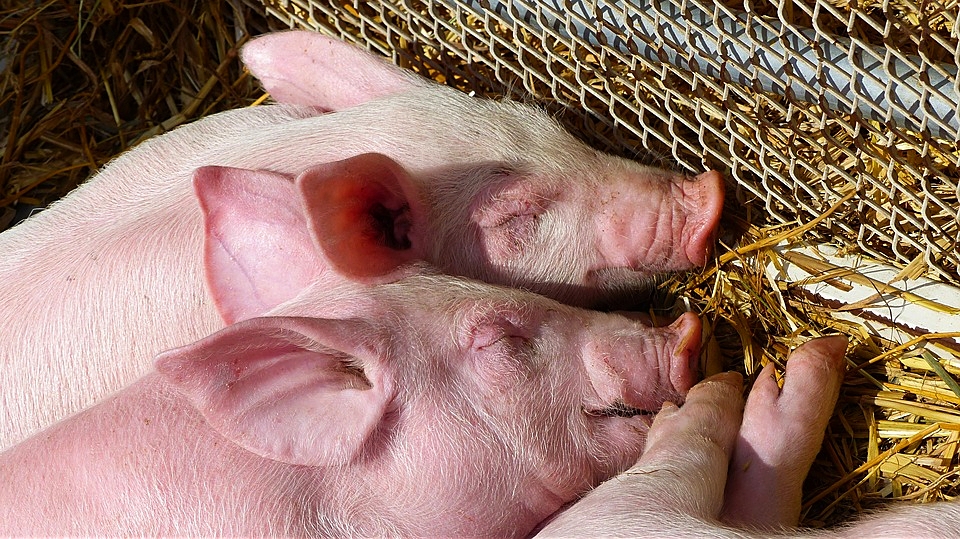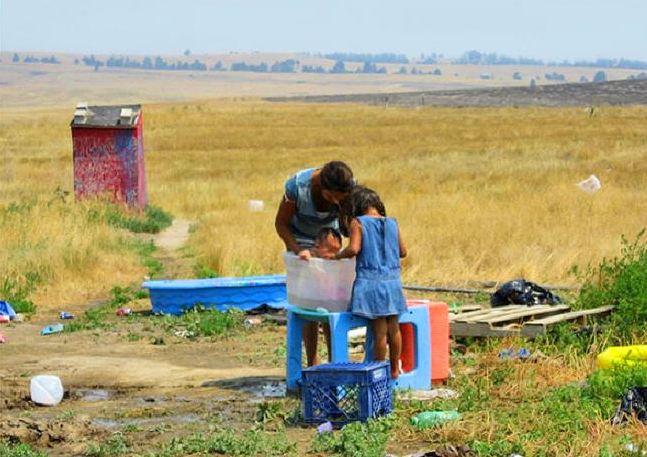The signs weren’t popular among many of the children and adults who were presenting animals at the fair. After all, a county or state fair is a chance to bridge the growing urban/rural divide in Oregon. It’s a chance for people to learn where their food, fur and leather comes from, to appreciate the role that agriculture still plays in our state’s economy.
Portland Tribune
Our Opinion: Don’t touch the animals? Not fair!
The folks running the Oregon State Fair understand that interaction between fairgoers and farmers and ranchers is part of what makes the annual event so special. And the attraction of those magnificent animals is often what brings them together.
When Joan Jett recorded “Do You Wanna Touch Me?” in 1981, she was singing about young romance. But as she prepares for a visit to the Oregon State Fair this Saturday, it also could be an anthem for the 4,000 ovines, bovines, caprines, equines and other assorted animals that will be on display within earshot of the L.B. Day Amphitheatre.
And, in our view, if a pygmy goat or Hereford calf presses its head up against the pen as you approach, you should feel free to reach out and offer a gentle scratch behind the ears.
And then, of course, wash your hands before grabbing that deep-fried, bacon-wrapped peanut butter cup.
This helpful hygiene tip is needed because of an unfortunate (though understandable) bit of overreaction at the Washington County Fair, where visitors this year were greeted with signs reading (in Spanish and English) “For your health and safety, don’t touch animals or pens.”
The motivation for this warning goes back to 2002, when dozens of people got sick due to contracting E. coli after visiting animal exhibits at the Lane County Fair.
That outbreak, the largest in Oregon, prompted several changes in the way livestock, which can carry E. coli in their feces, are presented at fairgrounds. It also sparked an increase in signs encouraging visitors to use newly installed handwashing stations on fairgrounds if they touched the animals.
All of which makes perfect sense.
But then, a year ago, Washington County officials announced that despite these efforts, four people contracted E. coli at the 2016 county fair. It’s not clear whether all those affected were fair visitors, but some health officials were apparently so concerned that they called for a ban on animals at the 2017 fair, an idea that was wisely rejected.
Rather, fair organizers embarked on an ambitious health training program for animal exhibitors, reorganized the livestock exhibit to separate animal routes from visitor paths, added even more hand-washing stations and, on each animal pen, posted the unfortunate sign discouraging visitors from touching the animals.
The signs weren’t popular among many of the children and adults who were presenting animals at the fair. After all, a county or state fair is a chance to bridge the growing urban/rural divide in Oregon. It’s a chance for people to learn where their food, fur and leather comes from, to appreciate the role that agriculture still plays in our state’s economy.
That opportunity is diminished when a fear of lawsuits clouds common sense.
Fortunately, the folks running the Oregon State Fair understand that interaction between fairgoers and farmers and ranchers is part of what makes the annual event so special. And the attraction of those magnificent animals is often what brings them together.
They, too, have boosted some “biosecurity” practices this year, and you’ll see plenty of signs in the livestock pavilion encouraging you to wash your hands.
But no one will stop you if want to take Joan Jett’s advice and “run your fingers” over a friendly Belgian hare or Suffolk spring lamb.
The decision to keep the fair a hands-on experience was a sensible one, and we encourage all local fair organizers — including those planning the 2018 event in Washington County — to do the same.
[paypal_donation_button]
Free Range Report
[wp_ad_camp_3]
[wp_ad_camp_2]




Maybe it is because of the “sanitation” in suburban areas, or just the fact that people don’t get out much anymore, but there seems to be a increasing number of rural area visit sicknesses. One has to wonder why the owners of these animals do not get as sick as those visitors to the animals or fairs. I have noticed the same with allergies. More and more people are carrying epipens, and yesterday a visitor experienced severe puffiness and watering eyes during a visit to our ranch. Are we as humans getting weaker or do we just complain more? Why hasn’t ecoli been a problem in state fairs in the past? Or is it that now one can detect e coli that it gets blamed when it is really not the cause? Add to this the new pension system of lawsuits and a lot of activities will be removed as an option. I find it interesting that we can bring 200 head of cattle into a pen, work them, spray them and no one gets sick. We eat and drink during the work and have lunch. No we don’t wash our hands, and they are often covered in dried blood from your time on the ground. I just find it interesting that this is a recent phenomena. I think it needs more research.